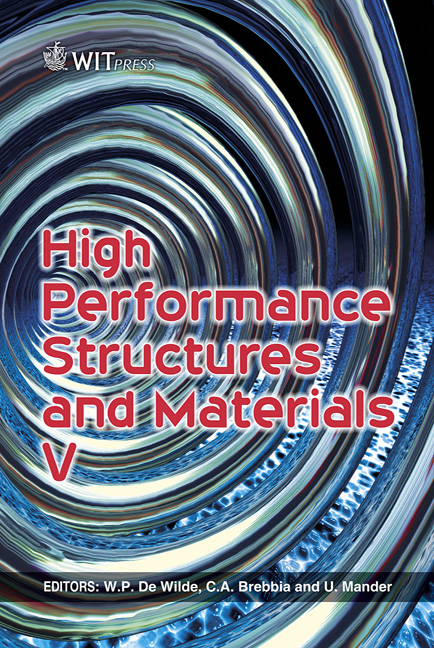Micromechanics Modeling For The Stiffness And Strength Properties Of Glass Fibers/CNTs/epoxy Composites
Price
Free (open access)
Transaction
Volume
112
Pages
12
Page Range
279 - 290
Published
2010
Size
622 kb
Paper DOI
10.2495/HPSM100261
Copyright
WIT Press
Author(s)
M. Kim, F. A. Mirza & J. I. Song
Abstract
This research explores micromechanics modeling for the prediction of stiffness and strength properties of nanocomposites consisting of randomly oriented carbon nanotubes (CNTs) and an epoxy matrix, and multiscale composites consisting of unidirectional glass fibers, randomly orientated CNTs, and an epoxy matrix. For stiffness properties, including Young’s modulus, Poisson’s ratio, and shear modulus, of CNTs/epoxy composites and glass fiber/CNTs/epoxy composites, the Mori-Tanaka model and Halpin-Tsai equations were used. To obtain the strength properties of the composites, including tensile and compressive strength, several empirical equations were employed. The estimated mechanical properties of nanocomposites were used as matrix properties in the micromechanical models for multiscale composites. The results showed that the stiffness and strength properties of nanocomposites and multiscale composites were improved by integrating CNTs in the systems. Keywords: carbon nanotubes, fiber reinforced composites, micromechanics modeling, mechanical properties. 1 Introduction The extraordinary physical properties of carbon nanotubes (CNTs) have encouraged many researchers to study CNT/polymer nanocomposites. de Viollia et al. [1] showed improvement of the tensile modulus and strength with the inclusion of 0.1 wt.% of CNTs in epoxy resin. The improvement of Young’s modulus, yield strength, strain to failure, and fracture toughness were reported
Keywords
carbon nanotubes, fiber reinforced composites, micromechanics modeling, mechanical properties





